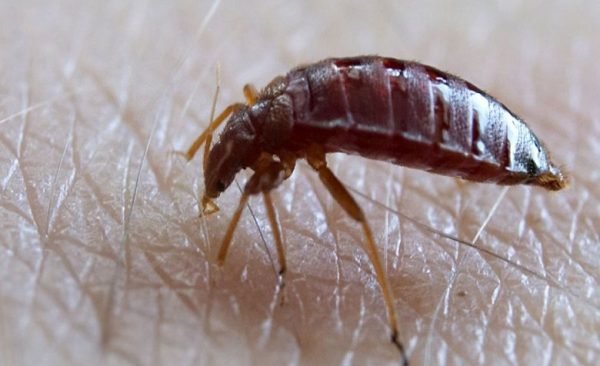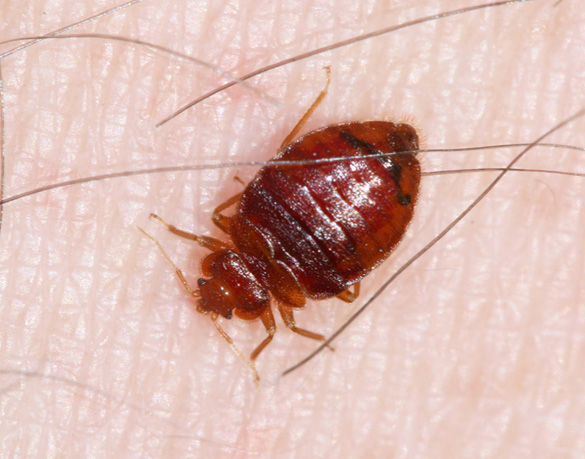Get Informed Concerning the Sorts Of Pest Control Approaches and Their Benefits for Home Owners
Comprehending the numerous pest control methods offered to home owners is essential for reliable insect monitoring. From chemical and organic strategies to mechanical and cultural practices, each approach provides special advantages that can dramatically impact both wellness and environmental security. Homeowners that are well-informed can make tactical selections that not only address parasite issues but also boost the overall quality of their living environment. As we discover these techniques even more, it comes to be clear that the decision-making process entails even more than just immediate outcomes; it touches on long-lasting sustainability and health. What elements should influence these crucial choices?
Chemical Insect Control Techniques
Chemical pest control techniques are a critical part of incorporated bug administration strategies for house owners looking for effective options to pest infestations. These techniques entail the application of chemical substances developed to remove or hinder parasites that endanger personal effects, wellness, and comfort. Usual chemicals used include insecticides, fungicides, rodenticides, and herbicides, each tailored to target specific parasites.
The main advantage of chemical pest control is its fast performance; many formulations give instant outcomes, lowering pest populaces substantially in a brief time. Additionally, advances in chemical solutions have led to items that are extra environmentally friendly and have lower poisoning levels for non-target microorganisms when applied properly.

Biological Parasite Control Strategies
All-natural bug control approaches have actually gained prestige as homeowners look for more secure and extra lasting options to standard chemical methods. Biological parasite control methods utilize all-natural killers, parasites, or virus to manage insect populations successfully. This technique is not just eco pleasant yet additionally lessens the threat of harm to non-target species, consisting of advantageous insects and wildlife.
Among one of the most common organic control methods entails introducing natural predators right into the setting. For example, ladybugs can be used to manage aphid populaces, while nematodes target soil-dwelling pests like grubs. Additionally, parasitoids-- microorganisms that survive on or within a host-- can be used to control specific pest species by laying eggs inside them, inevitably causing their death.
One more strategy is using biopesticides, which are stemmed from natural products such as plants, minerals, or germs (bed bug exterminator). These items can efficiently target parasites while posturing minimal danger to human beings and family pets. Generally, organic insect control methods provide property owners with an efficient ways of insect management that aligns with eco-friendly concepts, promoting a healthier living setting while reducing dependence on artificial chemicals
Mechanical Insect Control Approaches
Mechanical bug control methods encompass a selection of techniques that physically prevent or eliminate bugs without making use of chemicals. These techniques are specifically advantageous for home owners seeking environmentally pleasant alternatives while making sure the safety of their living areas.
One typical technique is image source making use of barriers, such as webs, catches, and screens, which protect against pests from entering homes or particular locations. As an example, installing home window displays can properly keep pests out, while making use of physical barriers around yards can hinder bigger bugs like deer or bunnies. Additionally, mechanical traps designed for rodents can capture and eliminate these insects without the demand for toxic compounds.
Another effective technique entails the usage of mops and vacuum cleaners to get rid of parasites straight from surfaces. Routine cleansing and upkeep can considerably lower insect populations by getting rid of food resources and hiding spots. Utilizing tools like ultrasonic pest repellents can prevent different parasites via noise waves that are undesirable to them but faint to human beings.
Cultural Pest Control Practices
Social insect control techniques concentrate on changing the environment and administration techniques to produce problems that are much less for pest invasions. These techniques are essential in preserving a well balanced environment and decreasing the reliance on chemical treatments. By changing agricultural techniques, homeowners can efficiently deter insects while promoting plant health and wellness.
One common approach includes crop turning, which interrupts the life cycles of insects by changing the sorts of plants grown in a specific area (bed bug exterminator). This not just decreases pest populaces however likewise enhances dirt health. In addition, intercropping-- planting varied plants in closeness-- can confuse pests and reduce their ability to find their favored host plants
Water management is another vital element of social practices. Correct irrigation methods can prevent standing water, which acts as a breeding place for insects and various other parasites. Preserving cleanliness in and around the home, such as frequently getting rid of debris and food waste, can dramatically reduce bug tourist attraction.
Incorporating these social practices right into a thorough pest management technique allows house owners to create a setting that naturally prevents insects, thereby improving the effectiveness of Read Full Article other control approaches while promoting lasting gardening and landscape design.

Integrated Parasite Management Approaches
Integrated Pest Monitoring (IPM) stands for an all natural strategy that combines different methods to properly take care of bug populations while decreasing ecological impact. This method incorporates organic, social, physical, and chemical practices to attain sustainable parasite control. By assessing pest populaces and their all-natural opponents, IPM emphasizes tracking and determining bugs prior to implementing control procedures.
One of the core concepts of IPM is making use of thresholds, which develop the degree of pest task that warrants intervention. This makes sure that treatments are used just when needed, decreasing the dependence on chemical pesticides. Biological control techniques, such as introducing natural killers or bloodsuckers, job in conjunction with cultural practices like crop rotation and habitat control to interrupt pest life cycles.
Moreover, IPM motivates the usage of least-toxic chemical alternatives when intervention is essential, prioritizing items that present very little threat to non-target microorganisms and the atmosphere. For home owners, adopting IPM comes close to not only boosts the efficacy of bug management but also promotes a much healthier living setting, promoting biodiversity and reducing chemical direct exposure. Ultimately, IPM equips house owners to make informed decisions that balance pest control with environmental obligation.
Conclusion
In final thought, recognizing the different parasite control techniques encourages property owners to make informed decisions regarding pest administration. Each strategy-- chemical, biological, mechanical, cultural, and integrated pest management-- offers distinct benefits that satisfy different demands and choices. By choosing proper strategies, house owners can successfully manage parasite populations while decreasing wellness dangers and ecological effects. This informed method adds to a healthier living setting, advertising total health for animals and families alike.
Understanding the various pest control methods readily available to house owners is necessary for reliable insect management.Chemical parasite control approaches are a critical component of incorporated bug administration techniques for homeowners looking for reliable services to pest invasions. In general, organic insect control strategies provide home owners with an effective methods of pest administration that a fantastic read aligns with environmental concepts, advertising a healthier living environment while decreasing dependence on synthetic chemicals.
Cultural pest control techniques focus on modifying the setting and management strategies to create conditions that are less conducive to pest infestations.In final thought, comprehending the various bug control methods empowers property owners to make educated decisions concerning pest administration.
Comments on “How to Identify Bed Bug Bites and Prevent Future Infestations”